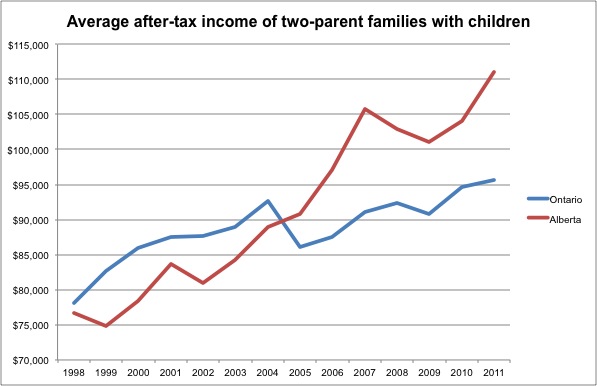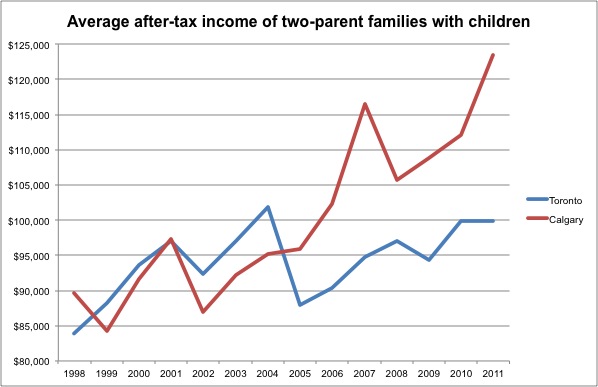Location really matters when talking middle-class incomes
Once again, Ontario—and Toronto—are laggards
The CN Tower is reflected on an end table in the dining room of the Ritz Carlton residents model suite in Toronto May 1, 2012. By the end of this summer Toronto will have four projects, as Four Seasons, Ritz Carlton, Trump and Shangri-La open massive towers in a city where a red-hot market for all types of housing has brought rising concern about a real estate bubble. The granite-and-glass towers, including two of Canada’s tallest residential buildings, are opening in quick succession, adding hundreds of hotel rooms and more than a thousand condominiums just as Canadian housing hype hits a fever pitch. Picture taken May 1, 2012. REUTERS/ Mike Cassese (CANADA – Tags: REAL ESTATE BUSINESS)
Share
Earlier today John Geddes shone a light on the income data underlying Justin Trudeau’s claim that middle class Canadians have been left out of the economic gains generated by free trade and fiscal restraint. As John rightly points out, income figures can be sliced and diced pretty much any which way, and that at their most fundamental, the data show after-tax incomes for the average two-parent family with children have largely kept pace with economic growth.
But I think there is one slice and dice that’s worth a mention when it comes to the Liberals’ political messaging and their intended target. And that’s the widening gap between incomes in Ontario and other parts of the country.
For the sake off a clean chart, let’s focus on Alberta and Ontario. Using the same time frame as in John’s original post, starting in 1998 with the elimination of Canada’s deficit, the average income of a couple with kids in Alberta has risen roughly 45 per cent—well outpacing the 37 per cent growth of Canada’s economy during the same period. In Ontario the respective income gain was less than 23 per cent, the lowest of any province save for Nova Scotia.
In fact, other than B.C. (income growth: 24.5 per cent) and Manitoba (27.4 per cent) every other province saw incomes for two-parent with children households match or exceed GDP growth over that time.
Getting back to the Ontario and Alberta comparison, the gap is even wider when you drill down to the city level. In Toronto, incomes for this group have barely budged for a decade (the most recent Statistics Canada income data were from 2011)…
To the extent that Ontario, and Toronto in particular, are seen as key battlegrounds by the Liberals in the next election, Trudeau’s message could have resonance there in a way that it doesn’t in most other parts of the country.

